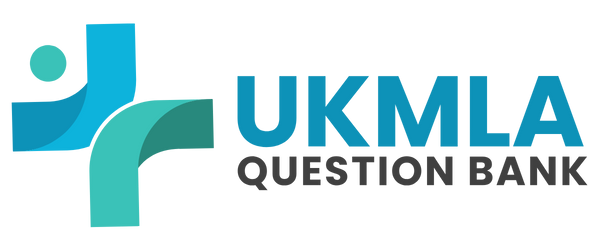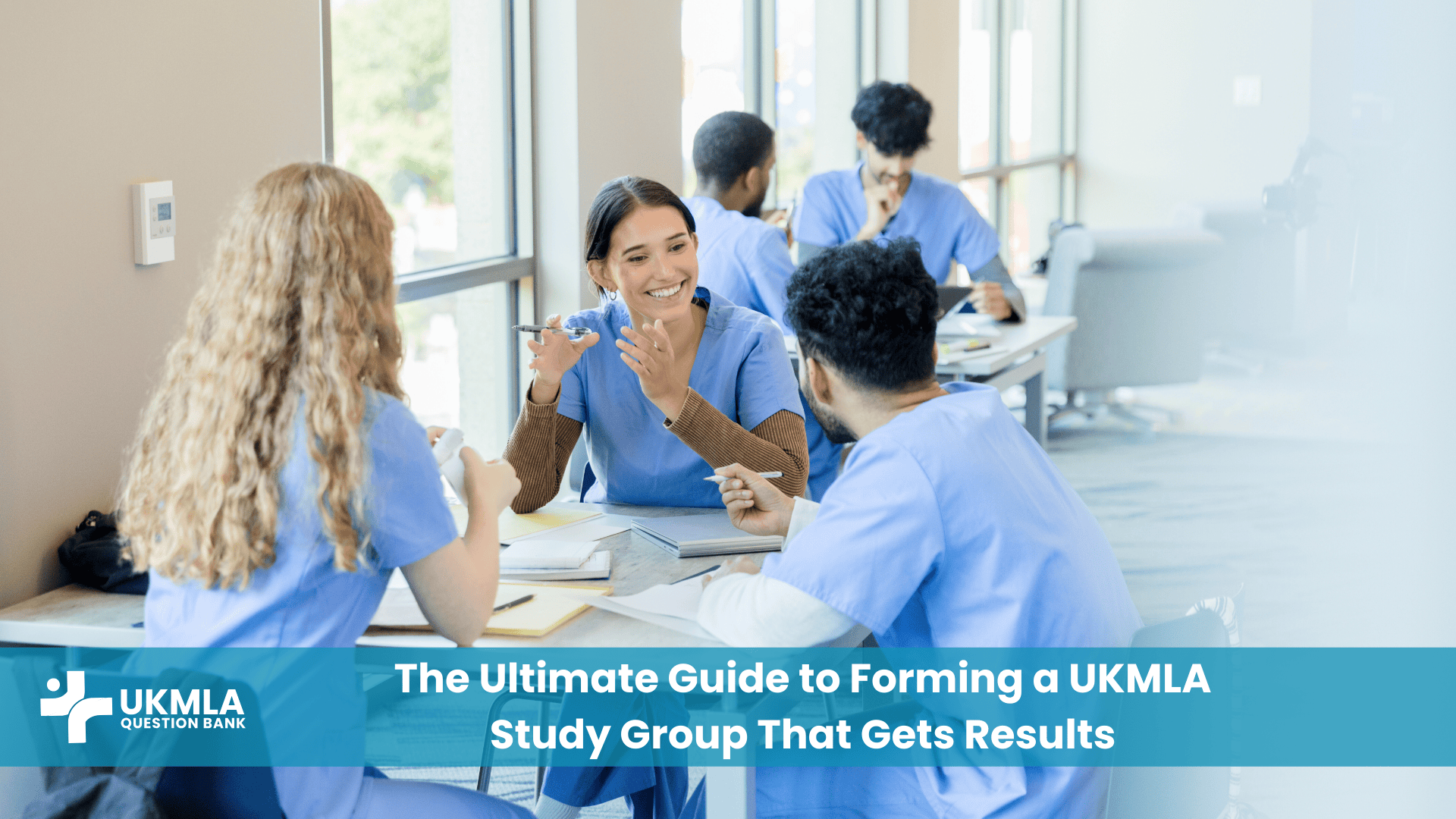Introduction
A UKMLA study group can be one of the most powerful assets in your exam preparation, yet it can also be one of the biggest wastes of time. The journey through medical school and towards the UKMLA is often a solitary one, marked by long hours spent with textbooks and question banks. While individual study is essential, the right kind of collaborative learning can unlock a new level of understanding, provide crucial motivation, and make the entire process more manageable. It is, after all, one of the many essential tips for passing the UKMLA.
However, a poorly organised study group—one without structure, goals, or commitment—can quickly devolve into an unproductive social gathering that leaves you more stressed than before. The difference between a high-yield study session and a time-wasting chat lies entirely in the planning and execution. This guide provides a balanced view of the pros and cons of forming a study group and offers seven essential best practices to ensure your group is a powerful engine for success, not a distraction from your goals.
Table of Contents
ToggleIs a UKMLA Study Group Right for You? Pros vs. Cons
Before you start sending messages to your classmates, it’s crucial to weigh the potential benefits against the risks. A study group is a significant time commitment, and you need to be sure it aligns with your learning style and goals.
Table 1: UKMLA Study Group – A Summary of Pros and Cons
| Pros | Cons |
|---|---|
| Motivation & Accountability | Unproductive Socializing |
| Deeper Understanding of Topics | Mismatched Goals & Commitment |
| Diverse Perspectives & Problem-Solving | Scheduling Conflicts |
| Shared Resources & Notes | Uneven Contribution (“Free-Riding”) |
| Excellent CPSA Practice | Potential for Misinformation |
The Pros: Why Group Study Can Be a Game-Changer
Motivation and Accountability: On days when your motivation wanes, knowing that your group is counting on you can be the push you need to show up and stay engaged. This shared sense of responsibility creates a powerful accountability structure that is difficult to replicate when studying alone.
Deeper Understanding: The act of explaining a complex topic to someone else is a cornerstone of effective learning. This is the Feynman Technique in action. When you are forced to articulate a concept in simple terms, you quickly identify the gaps in your own knowledge and solidify your understanding in the process.
Diverse Perspectives: Everyone thinks differently. A problem or clinical vignette that seems impossible to you might be straightforward for a group member with a different way of thinking. Exposure to these diverse perspectives can unlock new ways of approaching difficult questions.
Resource Sharing: A good study group becomes a hub of high-yield information. Members can share notes, helpful mnemonics, useful videos, and challenging questions, creating a curated pool of resources that is more valuable than any single person could gather alone.
CPSA Practice: This is perhaps the most significant advantage. A study group provides the ideal environment for role-playing clinical scenarios, practicing history taking, and refining communication skills. This hands-on practice is invaluable for the practical component of the UKMLA.
The Cons: Potential Pitfalls to Avoid
Unproductive Socializing: This is the number one killer of study groups. Without a firm agenda and a shared commitment to focus, it’s incredibly easy for a two-hour revision session to turn into a two-hour chat about anything but medicine.
Mismatched Goals: A group will not function well if one member is aiming for a top decile score while another is just hoping to pass. This can lead to frustration over the pace, depth, and intensity of the sessions.
Scheduling Conflicts: The difficulty of balancing UKMLA prep with medical school work and personal life is already immense. Trying to coordinate the schedules of 3-5 equally busy medical students can be a significant logistical challenge.
Uneven Contribution: The “free-rider” problem can quickly breed resentment. If one or two members consistently show up unprepared or contribute very little, it demotivates the rest of the group and disrupts the collaborative dynamic.
7 Best Practices for a Successful UKMLA Study Group
If you’ve weighed the pros and cons and decided to proceed, follow these seven best practices to create a group that thrives.
1. Find the Right People (The 3-5 Rule)
The composition of your group is the single most important factor for success. The ideal group size is between 3 and 5 members. This is small enough to ensure everyone gets a chance to contribute but large enough to generate diverse ideas. Look for colleagues who share your work ethic, commitment level, and overall goals for the UKMLA. Before formalizing the group, consider having one or two trial sessions to see if your study styles are compatible.
2. Establish Clear Ground Rules from Day One
A successful group runs on clear expectations. Before your first real session, sit down together and establish a charter or a set of ground rules. This should be a collaborative process. Principles of teamwork and professionalism, as outlined in the GMC – Good medical practice, are highly relevant here.
Your ground rules should cover:
Attendance: How many missed sessions are acceptable? What is the protocol for notifying the group of an absence?
Preparation: Is everyone expected to have reviewed the topic before the session?
Punctuality: Agree to start and end on time.
Managing Disagreements: How will you handle academic disagreements? (Hint: refer to evidence and guidelines).
3. Structure Every Session with an Agenda
Never start a session with “So, what should we study today?” This is a recipe for wasted time. Every single meeting must have a pre-agreed agenda that is sent out at least a day in advance. The agenda should be specific and outcome-oriented.
Table 2: Sample Study Session Agenda
| Time | Activity | Goal |
|---|---|---|
| 5 mins | Quick Catch-up | Settle in and briefly review the agenda. |
| 45 mins | Timed Question Block | Everyone silently completes 30 AKT questions on Cardiology. |
| 30 mins | Group Review Part 1 | Discuss the 5 most-flagged questions as a group. |
| 10 mins | Break | Short break to recharge. |
| 45 mins | CPSA Practice | Split into pairs to practice a history-taking station. |
| 15 mins | Group Feedback & Wrap-up | Each pair shares key learning points. Agree on next session’s topic. |
4. Focus on Active Learning, Not Passive Review
The least effective way to use group time is to sit together and passively read a textbook. Your sessions should be built around active learning principles that force engagement. Good activities include:
Working through question blocks together on a whiteboard.
“Teaching” a pre-assigned topic to the rest of the group.
Creating mind maps or flowcharts for complex conditions.
Quizzing each other with flashcards or self-made questions.
5. Assign Roles for Each Session
To ensure balanced participation and keep sessions on track, rotate roles among members. This prevents one person from dominating and ensures everyone takes ownership of the group’s success.
Leader/Facilitator: Keeps the discussion on topic and moves through the agenda.
Timekeeper: Ensures you stick to the timings set out in the agenda.
Scribe/Note-Taker: Summarizes key learning points or difficult concepts on a shared document.
“Devil’s Advocate”: Gently challenges assertions to ensure the group is thinking critically and not just accepting the first answer.
6. Practice for the CPSA, Not Just the AKT
It is easy for study groups to focus exclusively on the AKT’s knowledge-based content. However, one of your group’s biggest advantages is the ability to practice for the CPSA. Dedicate a significant portion of your time to this. Use a bank of UKMLA CPSA mock stations and practice in pairs, with the third member acting as an observer or the patient. Providing structured, constructive feedback on communication skills and clinical examination technique is an invaluable part of this process.
7. Schedule Regular “Meta” Check-ins
Every 4-6 weeks, dedicate the last 15 minutes of your session to a “meta” check-in. This is a meeting about the meeting. Discuss what is working well with the group, what is not working, and how you can improve the process. Is the agenda format effective? Is everyone contributing equally? Are the sessions at a convenient time? This continuous improvement process ensures the group remains a valuable and effective resource for everyone.
Frequently Asked Questions (FAQ) about UKMLA Study Groups
This depends on your collective schedules, but 1-2 times per week for a 2-3 hour focused session is a common and effective frequency. Any more can be difficult to sustain, and any less can lead to a loss of momentum.
This should be addressed early and gently, referring back to the ground rules you set in the beginning. The group leader for that week could have a private chat with the individual to see if there’s an issue and reiterate the group’s expectations.
This is a great learning opportunity. Designate the question as a “group learning task.” Assign one person to research the answer using authoritative sources (e.g., NICE guidelines, official textbooks) and report back with a clear explanation at the beginning of the next session.
They absolutely can be. With tools like Zoom for video calls, shared whiteboards like Miro, and collaborative documents like Google Docs, you can replicate most of the benefits of an in-person group. The key is to maintain the same level of structure and focus.
This is where rotating roles (Best Practice #5) is crucial. Having a designated facilitator for each session helps ensure that quieter members are invited to speak and that the conversation is balanced.
A combination is best. You should follow a structured plan to cover the entire syllabus, but the group can decide to dedicate extra time to topics that multiple members have identified as weaknesses.
Use a structured feedback model, like the “Pendleton’s Model”: 1. Ask what the person thought went well. 2. State what you thought went well. 3. Ask what they would do differently. 4. Suggest what you think they could do differently. This is a supportive and effective framework.
Yes, a shared Google Drive for notes and a WhatsApp or Telegram group for logistics and quick questions is highly recommended. This helps keep resources organized and communication efficient between sessions.
The designated “tie-breaker” should always be evidence from a gold-standard, UK-based resource (e.g., NICE, CKS, a major textbook). The goal is to find the correct answer for the exam, not to win an argument.
Ideally, the group should continue until the exam. In the final 1-2 weeks, the focus may shift from learning new topics to mutual support, running through last-minute revision questions, and keeping morale high.
Conclusion
A well-organized UKMLA study group is a strategic asset that transforms revision from a solitary struggle into a collaborative mission. It’s not just a social activity; it’s a dynamic learning environment that fosters accountability, deepens understanding, and provides invaluable practice for both the AKT and CPSA. The difference between a successful group and a failed one is not luck—it’s structure, commitment, and a shared purpose.
By following the best practices outlined in this guide—from choosing the right people and setting clear rules to structuring every session and focusing on active learning—you can create a supportive and high-achieving environment. This investment in collaborative study will not only pay dividends in your UKMLA score but will also help you build the teamwork and communication skills that are the foundation of a successful medical career.




